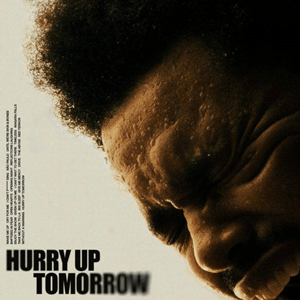Nothing, but also everything, matters in the film ‘Everything Everywhere All At Once’
The official movie poster of Everything Everywhere All At Once (2022)
The 2022 science-fiction film Everything Everywhere All At Once (EEAAO) has become the talk of this year’s award season. As the 95th Academy Awards are approaching, Everything Everywhere All At Once has become the most nominated film with a total of 11 nominations. While the movie was released in the spring of last year, it was recently re-released in theaters due to its growing popularity.
Everything Everywhere All At Once follows the story of a Chinese-American immigrant family, the Wang’s, who own a laundromat and are currently being audited by the IRS. As she is preparing for a very important meeting, Eveyln Wang discovers that everything is in danger and it is she who can save life itself from the evil and mysterious force of Jobu Tupaki. With the help of her husband, Waymond, Evelyn delves into the multiverse in order to save humanity.
If you plan on watching the movie and don’t mind any spoilers, then feel free to continue reading. Otherwise, this is your official spoiler warning.
This comedic sci-fi film uses the multiverse in order to explore deep and meaningful themes such as the concept of absurdism, the nuances of life, depression, mental health, growing up with immigrant parents, generational trauma, and generational differences.
First and foremost, the film is a great representation of Asians and Asian Americans. Additionally, it does a great job of depicting the challenges of being born into an Asian immigrant family and how Asian beliefs and tradition produces generational trauma through various generational differences.
As a Filipino immigrant myself, there were multiple points in the film where I strongly resonated with the mixed internal and external feelings and emotions that Evelyn and her daughter Joy have of each other. This complex and strained relationship, and the journey of trying to restore it, is the driving force of the plot that helps explore the film’s themes.
EEAAO takes the viewers on a wild ride through the multiverse. It may seem confusing at first to understand how the multiverse and the action of verse-jumping works, so here’s a quick rundown:
- The multiverse is the concept that there are other universes existing simultaneously, and everyone has an alternate version of themselves in every universe.
- The film emphasizes that every decision and action you make, from the smallest to the largest, could have led you to another life, to another universe. This concept is shown through the action of verse-jumping, which is when a character performs small (and typically strange actions) in order to temporarily access the memories, emotions, and skills of an alternative version of themselves.
While every character has multiple alternate versions of themselves in the multiverse, Joy only has one, and that alternate version of herself is none other than Jobu Tupaki. This is revealed early on in the film and explains that the reason Jobu is a dark and powerful force is because she’s the only individual in the multiverse who is able to effortlessly jump from various universes with the snap of her finger. As a consequence, Joy is able to feel every emotion all at once.
Everything Everywhere All At Once is known for its humor, chaos, and absurdity via special effects, editing, and hilarious and ridiculous dialogue. The visuals of this movie are out of this world and truly illustrate the absurd multiverse that Everything Everywhere All At Once takes place in. While it may seem like nothing makes sense in this crazy film, these creative choices all tie in with the film’s main theme of the concept of absurdism: life and the world around it lacks actual meaning.
There are countless minuscule details that symbolize and represent the philosophy of different characters and contribute to the overall message of the film.
Circles play a huge role and can be seen scattered throughout the film.
Jobu condenses all her findings from every universe into an (everything) bagel, which collapses on itself like a black hole. After experiencing and witnessing every emotion in every universe, Jobu/Joy concludes that nothing in life matters. Other than the bagel itself, aggressively drawn circles that look similar to the bagel represent Jobu/Joy’s philosophy that nothing matters.
Another significant detail is the googly eyes. They represent the philosophy of Waymond Wang which is also that nothing matters; however, because nothing matters, it means that everything matters. The bagel and googly eyes are seen as the yin and yang.
Waymond acts as the middle ground between Evelyn and Joy. He is the grounding force and the source of kindness, patience, and understanding in his loved ones’ lives. Amidst the chaos and the loud noises of life, he reminds everyone that it is the small and meaningless things that hold the most significance.
Everything Everywhere All At Once tells us that nothing in life matters. However, it is how we interpret that message which can affect and change our outlook on life drastically. Reject the bagel, embrace the googly eyes.
Michelle Yeoh, Ke Huy Quan, and Stephanie Hsu’s acting are absolutely phenomenal and moving. Their performances take you on this crazy and absurd journey through the multiverse and allow you to feel various emotions. Never has a film made me laugh so much, cry so much and question existence the way Everything Everywhere All At Once has.
Since EEAAO covers various topics, anyone can take something meaningful out of this unique and peculiar film.
As someone who has seen the movie on both a small computer screen and recently in theaters, I highly recommend that you take advantage of this re-release and watch Everything Everywhere All At Once on the big screen in order to fully immerse yourself in a universe filled with laundry, taxes, and googly-eyes.










